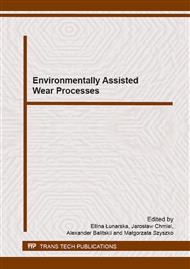p.45
p.53
p.59
p.65
p.71
p.77
p.85
p.93
p.101
Hydrogen Embrittlement of Biodegradable Magnesium
Abstract:
Magnesium alloys are increasingly used in biomedical applications as temporary implants in the human body. The degradation behaviour of magnesium in physiological environments, in combination with the tendency of the corrosion products to be harmlessly dissolved and excreted with the urine, make magnesium very attractive for temporary implant applications. One of these applications is the use of the material for making coronary stents. Such applications are, on the other hand, critically dependent on the mechanical integrity of the implant during service. A number of recent studies have evaluated the in-vivo and in-vitro corrosion behaviour of magnesium and its alloys, and the ongoing research seeks to provide a fundamental understanding of the factors that influence their bio-degradation and environmental failure and to expand this understanding through experimental evidence. In this paper, the propensity of the magnesium alloys AM30 and WE43 to hydrogen embrittlement and to corrosion fatigue was studied using constant extension rate tensile tests on fatigue pre-cracked compact specimens and corrosion fatigue tests on tubes which are typically used for the production of stents and which were tested in simulated body fluid.
Info:
Periodical:
Pages:
71-76
Citation:
Online since:
December 2014
Authors:
Price:
Сopyright:
© 2015 Trans Tech Publications Ltd. All Rights Reserved
Share:
Citation:


